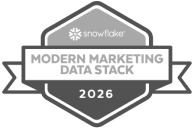What Is the Future of Data Visualization?
The future of data visualization is being shaped by advancements in technology, particularly the integration of large language models (LLMs). These models promise to revolutionize how data is interpreted and presented, making it more accessible, efficient, and insightful. This tutorial explores the various implications of LLMs on data visualization, from automation and efficiency to improved collaboration and user-centric design.
What are the foundational concepts of LLMs in data visualization?
Understanding the foundational concepts of LLMs in data visualization is crucial for grasping their future implications. LLMs, or large language models, are advanced AI systems capable of understanding and generating human-like text. When applied to data visualization, they can automate complex tasks, provide contextual insights, and enhance user interaction. These capabilities are transforming how data is visualized and interpreted, making it more accessible to a broader audience.
<!-- Example of LLMs in data visualization -->
import openai
def generate_visualization(query):
response = openai.Completion.create(
engine="text-davinci-003",
prompt=f"Generate a data visualization for: {query}",
max_tokens=150
)
return response.choices[0].text
query = "sales data for the last quarter"
visualization = generate_visualization(query)
print(visualization)
This code snippet demonstrates how an LLM can be used to generate a data visualization based on a user query. The model takes a natural language input and produces a relevant visualization, showcasing the potential for automation and efficiency in data visualization.
How do LLMs enhance automation and efficiency in data visualization?
LLMs significantly enhance automation and efficiency in data visualization by automating complex data structuring and report generation. This reduces manual effort and increases productivity, making high-quality visualizations more accessible to a wider audience. Automated dashboards and visualizations can be generated quickly, allowing data analysts and business users to focus on more strategic tasks.
- Automation: LLMs can automate repetitive tasks such as data summarization and visualization creation, freeing up time for more complex analysis.
- Efficiency: By reducing the time and effort required to produce visualizations, LLMs increase overall productivity and allow for faster decision-making.
- Accessibility: Automated tools make it easier for non-experts to generate and interpret visualizations, democratizing access to data insights.
How do LLMs improve data context and insights?
LLMs improve data context and insights by leveraging large datasets to provide personalized visualizations based on user queries and business requirements. This capability allows users to gain deeper insights without extensive data engineering expertise, making data more actionable and impactful.
- Contextual Insights: LLMs can analyze large datasets to provide relevant context and explanations alongside visualizations, enhancing understanding.
- Personalization: Visualizations can be tailored to individual user needs and preferences, making the insights more relevant and useful.
- Data Exploration: Users can explore data more intuitively, asking natural language questions and receiving insightful visual responses.
How do LLMs facilitate improved collaboration in data visualization?
LLMs facilitate improved collaboration in data visualization by assisting in data exploration and visualization, enabling real-time data analysis among teams. This collaborative approach enhances decision-making processes and ensures that insights are shared effectively across the organization.
- Real-Time Collaboration: Teams can work together on data visualizations in real-time, making it easier to share insights and make informed decisions.
- Enhanced Communication: LLMs can generate data-driven summaries and insights, bridging the gap between business and technical teams.
- Facilitated Exploration: Users can collaboratively explore data, asking questions and receiving visual answers that drive deeper analysis.
What are the user-centric design benefits of LLMs in data visualization?
LLMs contribute to user-centric design in data visualization by generating intuitive and engaging visualizations that improve user experience. Personalized visualizations enhance user understanding and adoption of new data products, making data more accessible and actionable.
- Intuitive Design: LLMs can create visualizations that are easy to understand and interact with, improving user engagement.
- Personalization: Visualizations can be tailored to individual user needs, enhancing relevance and usability.
- User Experience: Improved design and interaction make it easier for users to derive insights and take action based on data.
Common Challenges and Solutions
While LLMs offer numerous benefits for data visualization, there are common challenges that need to be addressed to fully realize their potential. Ensuring the correctness and reliability of visualizations, managing computational costs, and maintaining trust and oversight are crucial for effective implementation.
- Ensuring accuracy: Implement validation mechanisms to verify the correctness of automated visualizations.
- Managing costs: Optimize computational resources to handle the demands of real-time data visualization.
- Maintaining trust: Establish oversight processes to monitor and review automated visualizations for reliability.
Recap of the Future of Data Visualization
The future of data visualization is promising, with LLMs playing a pivotal role in transforming how data is interpreted and presented. Key takeaways include enhanced accessibility, automation, improved data storytelling, and user-centric design. By addressing the associated challenges, organizations can fully leverage the benefits of LLMs in data visualization.
- Enhanced accessibility: LLMs make data visualization more accessible to non-experts, empowering a broader range of users.
- Automation and efficiency: LLMs automate complex tasks, increasing productivity and allowing for faster decision-making.
- Improved storytelling: LLMs provide contextual insights and explanations, enhancing the impact and actionability of data visualizations.






.png)
.png)








